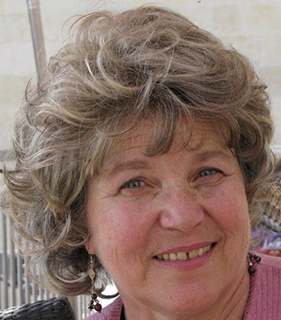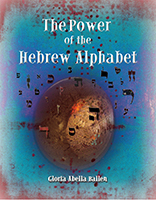Tamar Frankiel, Ph.D.
Author

Foreword by Tamar Frankiel
to The Power of the Hebrew Alphabet
by Gloria Abella Ballen.
The Hebrew letters, understood as building blocks of the universe, have inspired commentators and artists since ancient times. But rarely do the letters find a lover so tender and passionate as Gloria Abella Ballen. With this book, you hold in your hands 240 pages of artistic genius, exalted by the mystical quest and tamed by a deep caring for meaning and tradition.
The Zohar, premier mystical text of Jewish tradition, tells a story about the Hebrew letters. Each letter came before God, asking to be the one with which Creation would begin. The letters appeared in reverse order, beginning with the Tav, then the Shin, Resh, and so on. Each letter had a special quality -- its shape, sound, size, and the words that it would generate -- but to each letter God said no, until the Beit appeared. “With you I will begin the Creation, and the first word in the Torah -- Bereishit,” said God. The Beit was very happy, of course.
God then turned to the Alef, who was standing in the wings. “Are you not going to present yourself?” The Alef replied that she saw no need, as the first letter had already been chosen. “Come forward in any case,” said God, “because you also have a unique role. You will represent the One.” And indeed, Alef is not only the number 1 and the beginning of the word echad, but also the symbol of the unity of heaven and earth in Jewish meditation.
Like the Zohar’s processional (but in proper order), this book presents the uniqueness of each letter in page after page of beauty and exquisite design. Ballen has used fabric textures, images, and wide ranges of color to achieve great variety. The fanciful and the serious live here, the delicate and the bold; they rise in stately elegance, or they dance.
The letters are mystically the building blocks of the universe, because according to Torah, all is created through the word, through language, and letters make possible its visual expression, thought becoming form as letters combine into words. Yet the letters have a freedom that words do not. Words designate things, and therefore can be tied down to the literal and the factual, frozen into ideology. With words, we have to be pried away from the mundane reality by the poet, who plays with metaphor to renew the meanings. Letters, however, have the immediate potential to be number or picture; they can easily gravitate, or fly, toward the mathematical or the aesthetic.
Ballen uses words too, however, and the text adds to the experience. The page may offer a simple vocabulary lesson, saying to the reader “See, you can recognize Hebrew words!” Then on the very next page, traditions from the Sages and or mystical hints point toward deeper Jewish learning, and we are invited gently to reach toward transcendence.
What is perhaps most surprising is that I do not tire of looking at these pages. Just when I think to move along and flip through the pages, a new piece will catch my eye and I slow down again. Almost certainly, you will want to see these larger, closer; you will want to step back and look from a distance. You will wish you could feel the textures.
But especially, you will smile. This book awakens a subtle yet profound joy -- perhaps not unlike that of Alef when she learned she would be One.
Gaon Books
P.O. Box 23924
Santa Fe, NM 87502
505.920.7771
gaonbooks@gmail.com
Gaon Books
Excellence in Publishing
All images and texts in this website are under copyright.
To use materials please contact Gaon Books

